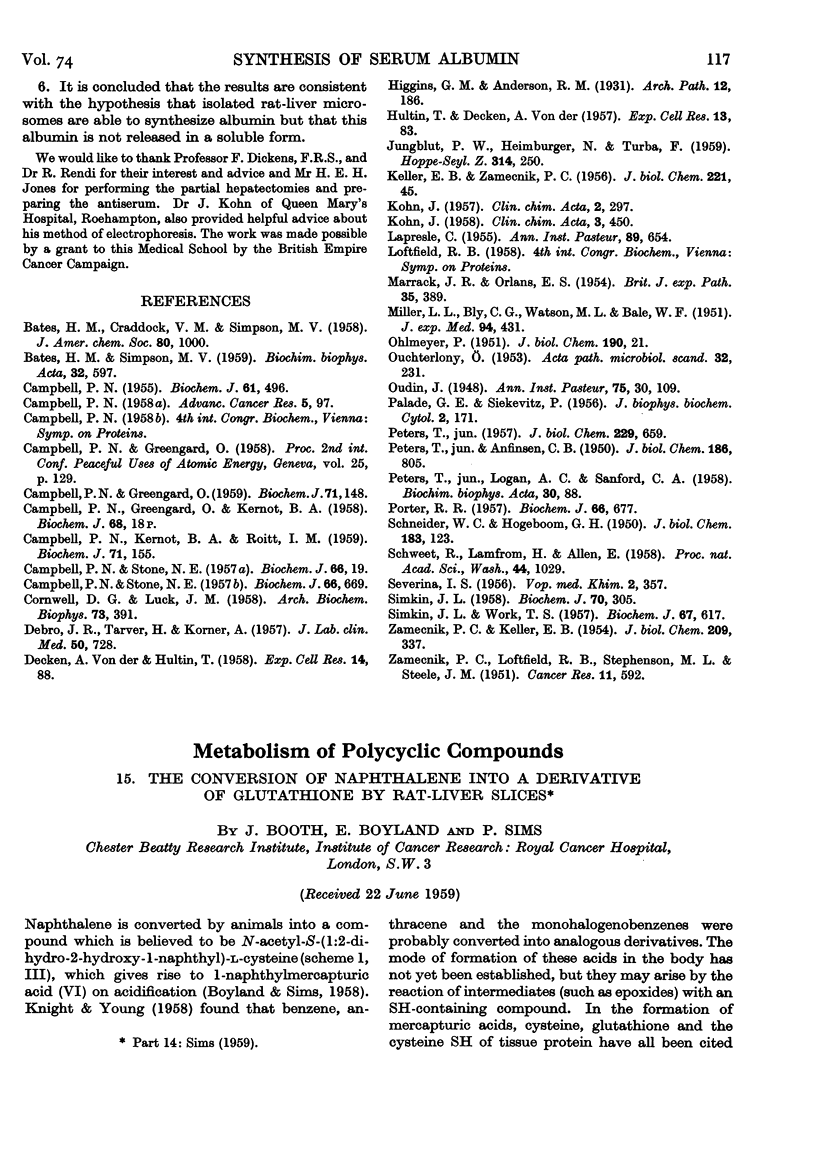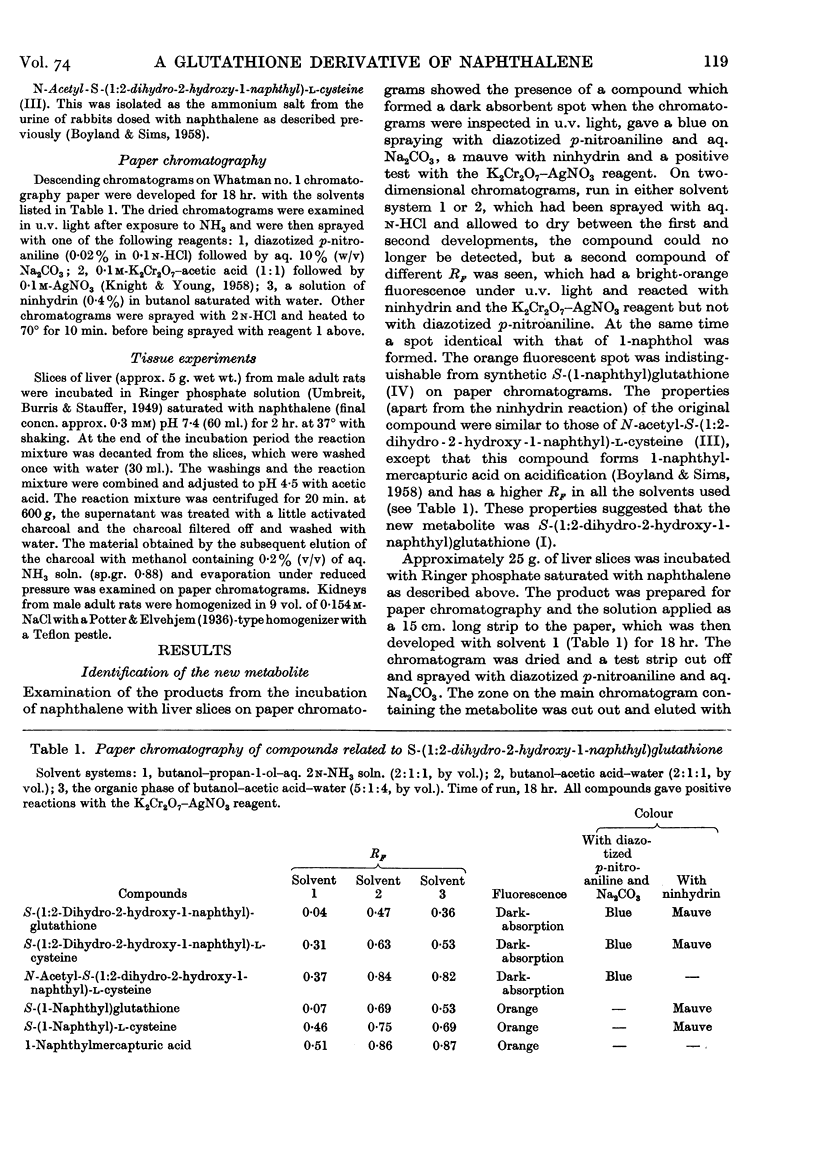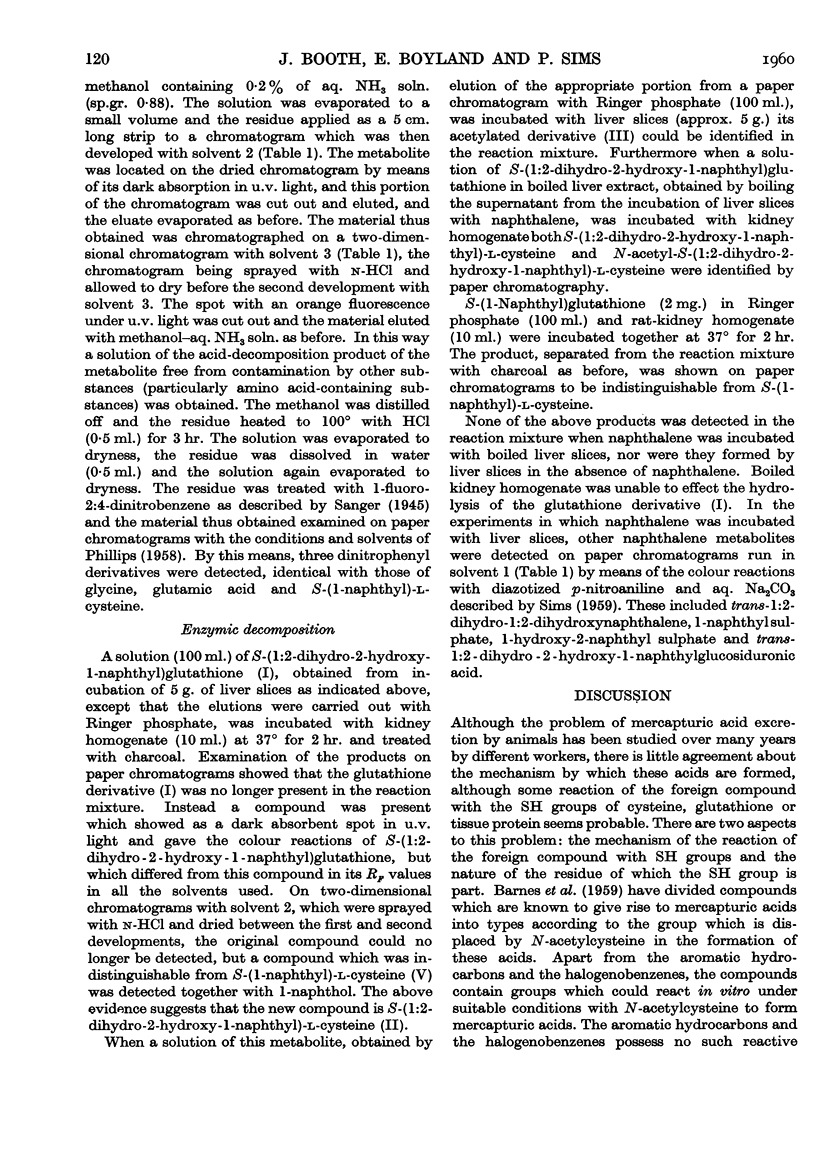Full text
PDF





Selected References
These references are in PubMed. This may not be the complete list of references from this article.
- BARNES M. M., JAMES S. P., WOOD P. B. The formation of mercapturic acids. 1. Formation of mercapturic acid and the levels of glutathione in tissues. Biochem J. 1959 Apr;71(4):680–690. doi: 10.1042/bj0710680. [DOI] [PMC free article] [PubMed] [Google Scholar]
- BOYLAND E., SIMS P. Metabolism of polycyclic compounds. 12. An acid-labile precursor of 1-naphthylmercapturic acid and naphthol: an N-acetyl-S-(1:2-dihydrohydroxy-naphthyl)-L-cysteine. Biochem J. 1958 Mar;68(3):440–447. doi: 10.1042/bj0680440. [DOI] [PMC free article] [PubMed] [Google Scholar]
- BRAY H. G., FRANKLIN T. J., JAMES S. P. The formation of mercapturic acids. 2. The possible role of glutathionase. Biochem J. 1959 Apr;71(4):690–696. doi: 10.1042/bj0710690. [DOI] [PMC free article] [PubMed] [Google Scholar]
- GUTMANN H. R., WOOD J. L. A note on the acetylation of sulfur amino acids by liver and kidney. J Biol Chem. 1951 Apr;189(2):473–477. [PubMed] [Google Scholar]
- GUTMANN H. R., WOOD J. L. The urinary excretion of mercapturic acids after administration of bromobenzene and 3,4-benzpyrene. Cancer Res. 1950 Nov;10(11):701–704. [PubMed] [Google Scholar]
- KNIGHT R. H., YOUNG L. Biochemical studies of toxic agents. 11. The occurrence of premercapturic acids. Biochem J. 1958 Sep;70(1):111–119. doi: 10.1042/bj0700111. [DOI] [PMC free article] [PubMed] [Google Scholar]
- MARSDEN C. M., YOUNG L. Biochemical studies of toxic agents. 10. Observations on the metabolism of 35S-labelled mercapturic acids. Biochem J. 1958 Jun;69(2):257–265. doi: 10.1042/bj0690257. [DOI] [PMC free article] [PubMed] [Google Scholar]
- MILLS G. C., WOOD J. L. Mercapturic acid precursors. J Biol Chem. 1956 Mar;219(1):1–8. [PubMed] [Google Scholar]
- MILLS G. C., WOOD J. L. Total mercapturic acid synthesis by liver and kidney. J Biol Chem. 1954 Apr;207(2):695–700. [PubMed] [Google Scholar]
- PARKE D. V., WILLIAMS R. T. Studies in detoxication. 37. Metabolism of benzene: examination of the glucuronide fraction of rabbit urine after administration of benzene; isolation of phenylglucuronide. Biochem J. 1951 May;48(5):621–624. doi: 10.1042/bj0480621. [DOI] [PMC free article] [PubMed] [Google Scholar]
- PHILLIPS D. M. The N-terminal groups of calf-thymus histones. Biochem J. 1958 Jan;68(1):35–40. doi: 10.1042/bj0680035. [DOI] [PMC free article] [PubMed] [Google Scholar]
- REVEL J. P., BALL E. G. The reaction of glutathione with amino acids and related compounds as catalyzed by gamma-glutamyl transpeptidase. J Biol Chem. 1959 Mar;234(3):577–582. [PubMed] [Google Scholar]
- Sanger F. The free amino groups of insulin. Biochem J. 1945;39(5):507–515. doi: 10.1042/bj0390507. [DOI] [PMC free article] [PubMed] [Google Scholar]
- Sims P. Metabolism of polycyclic compounds. 14. The conversion of naphthalene into compounds related to trans-1:2-dihydro-1:2-dihydroxynaphthalene by rabbits. Biochem J. 1959 Nov;73(3):389–395. doi: 10.1042/bj0730389. [DOI] [PMC free article] [PubMed] [Google Scholar]
- WEST H. D., MATHURA G. R. Synthesis of some aryl-substituted L-cysteines and their fate in the animal body. J Biol Chem. 1954 May;208(1):315–318. [PubMed] [Google Scholar]


